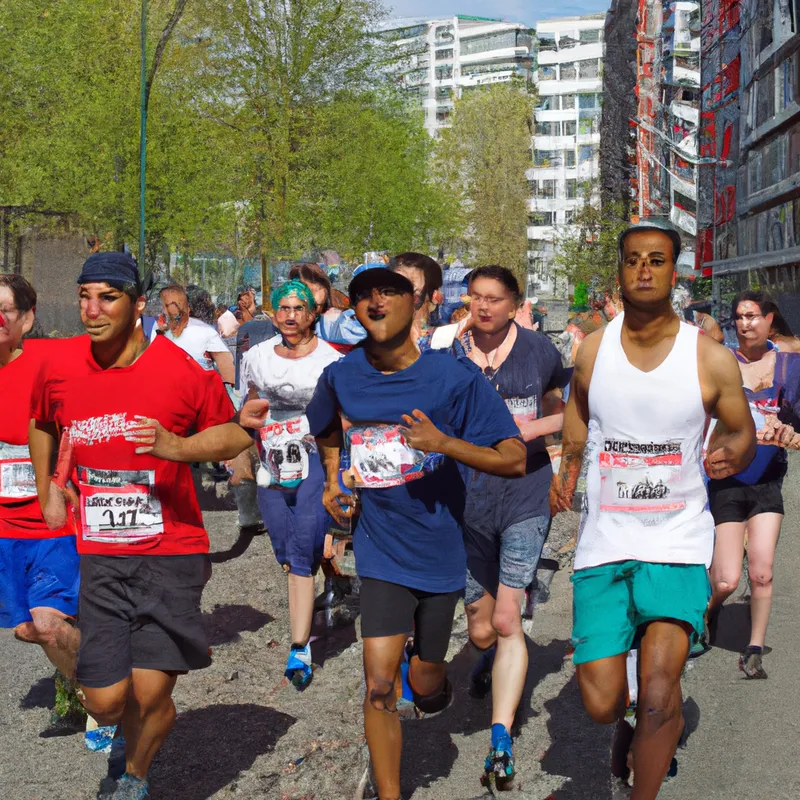Explore the Evolution of Charity Runs
The History of Charity Runs: From Local Fundraisers to Global Events
Charity runs raise funds for various causes. These events encourage community involvement and promote health. How did races evolve from local fundraisers to global phenomena? Let’s explore the history of charity runs.
The Early Days of Charity Runs
Charity runs began in the late 19th century. Communities organized small events to raise money for local causes. Races attracted local participants and took place in parks or town squares.
In the early 1900s, the Boston Marathon emerged. Although not a charity run initially, it inspired similar races. Participants viewed running as a way to support local charities. Communities began organizing fun runs, marathons, and walkathons.
The 1970s and 1980s: A Turning Point
The running boom of the 1970s changed charity runs. More people began running for fitness. Organizations saw an opportunity to combine running with fundraising. The first major charity run, “Race for the Cure,” launched in 1983 for breast cancer research.
During this time, charity runs grew in popularity. They attracted participants of all ages and abilities. Local charities adopted this model. Many organizations now host annual runs to support their missions.
The Rise of Corporate Sponsorship
As charity runs gained traction, companies began sponsoring them. Businesses recognized the value in associating their brands with charitable efforts. They provided financial support in exchange for advertising opportunities. This partnership allowed charities to expand their reach and increase fundraising.
The Global Expansion of Charity Runs
In the 1990s, charity runs flourished globally. Major events like the London Marathon and New York City Marathon emerged. These races attracted thousands and raised millions for various causes.
At the same time, the internet revolutionized fundraising. Online platforms helped charities promote their events. Participants could create personal fundraising pages to encourage donations. This shift allowed charity runs to reach a broader audience.
The Role of Social Media
Social media accelerated the growth of charity runs. Platforms like Facebook and Instagram enabled organizations to share their stories. More people learned about charity events and their supported causes. Participants often share training journeys online, inspiring others to join.
Tips for Organizing a Successful Charity Run
1. **Choose a Cause:** Select a cause that resonates with your community to motivate participants.
2. **Set a Date and Location:** Pick a date that does not conflict with major events. Choose an accessible location with adequate facilities.
3. **Promote Your Event:** Use social media, local newspapers, and community boards to spread the word. Engaging visuals and compelling stories attract attention.
4. **Engage Sponsors:** Reach out to local businesses for sponsorship. Offer advertising opportunities and recognition during the event.
5. **Create Incentives:** Provide incentives for participants, like T-shirts, medals, or prizes for top fundraisers. These rewards motivate people to raise more money.
Benefits of Participating in Charity Runs
Participating in charity runs offers numerous benefits. First, you contribute to a cause you care about. Your participation impacts the lives of others. Second, these events promote physical fitness. Running improves cardiovascular health and overall well-being.
Moreover, charity runs foster community spirit. They bring people together for a common purpose. Participants often form lasting friendships through shared experiences. These events raise awareness about important issues, educating the public and inspiring action.
Conclusion
Charity runs have evolved from humble beginnings. They transformed from local fundraisers into global events that unite communities. With roots over a century old, these races continue to thrive. As more people embrace running for a cause, charity runs remain a powerful way to support communities and promote health. Whether you’re a seasoned runner or a beginner, consider participating in a charity run. You will support a worthy cause and contribute to a healthier you.
Below are related products based on this post:
FAQ
What are charity runs and how did they start?
Charity runs are events organized to raise funds for various causes while promoting community involvement and health. They began in the late 19th century as small local fundraising events, with races taking place in parks or town squares. The Boston Marathon, which started in the early 1900s, inspired similar races that encouraged running for charity.
How have charity runs evolved over the years?
Charity runs have significantly evolved, especially during the running boom of the 1970s and 1980s. This period saw a surge in popularity as organizations began combining running with fundraising, leading to major events like “Race for the Cure.” By the 1990s, charity runs expanded globally, and the rise of the internet and social media further enhanced their reach and visibility.
What are the benefits of participating in a charity run?
Participating in charity runs provides several benefits, including contributing to a cause you care about and positively impacting the lives of others. Additionally, these events promote physical fitness and foster community spirit, bringing people together for a common purpose and often leading to lasting friendships.















Post Comment